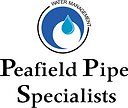Pipeline integrity is of paramount importance in industries such as oil and gas, water supply, and chemical processing. Ensuring the structural soundness of pipelines is crucial to prevent leaks, environmental disasters, and potential loss of life. One essential method for assessing pipeline integrity is conducting pressure tests. These tests involve subjecting pipelines to controlled pressure levels to evaluate their capacity to withstand operational stress. This article will delve into the key steps involved in conducting pipeline pressure tests, outlining the crucial aspects of this process.
Preparing for a Pressure Test
The foundation of a successful pressure test lies in meticulous preparation. One of the initial decisions involves selecting the pipeline segment for testing. This could be either a new construction pipeline or an existing one due for inspection. Factors such as the pipeline’s location, contents, and surrounding environment influence this choice.
Compliance with regulatory standards, often established by organizations such as the American Society of Mechanical Engineers (ASME) or the American Petroleum Institute (API), is a critical aspect. These standards provide guidance on design pressure and test pressure determination, which are vital for test accuracy and safety.
The selection of appropriate test equipment and instrumentation is equally important. Pressure gauges, transmitters, and data recorders ensure precise and reliable pressure measurement during the test. Moreover, adhering to safety measures during equipment setup is essential to protect both personnel and infrastructure.
Planning and Design
A well-structured test procedure is the backbone of a pressure test. This procedure outlines the sequential steps of the test, from filling the pipeline to monitoring the pressure. It also includes contingency plans for emergencies, ensuring that all possible scenarios are considered.
Isolation and preparation of the pipeline segment are crucial. Properly segmenting the pipeline and implementing flushing and cleaning procedures help eliminate debris and contaminants that might affect the accuracy of the test results. Clear communication and coordination among stakeholders are imperative. This includes involving regulatory authorities, landowners, and nearby communities. Timely permitting and notification prevent disruptions and ensure public safety.
Executing the Pressure Test
The execution phase requires precision and caution. Filling the pipeline with the appropriate test fluid is the initial step. The choice of fluid depends on factors such as the pipeline’s contents and its intended purpose. Gradually filling the pipeline minimizes the risk of water hammer, a phenomenon caused by sudden pressure changes that could damage the pipeline.
Applying the test pressure should be a gradual process to prevent sudden stress on the pipeline. Holding the pressure for a specified duration allows for observing the behavior of the pipeline under stress. Continuous monitoring and data collection, including pressure and temperature measurements, provide real-time insights into the pipeline’s performance.
Pressure Test Evaluation
After the pressure test, a thorough evaluation is conducted to assess the pipeline’s integrity. Stability analysis helps identify pressure fluctuations that might indicate leaks or breaches. Any deviations from the expected pressure behavior must be addressed promptly to ensure the pipeline’s safety.
Pressure drop assessment involves calculating the allowable pressure drop and analyzing pressure decay patterns. This step aids in identifying potential issues within the pipeline, contributing to a comprehensive understanding of its condition. Interpretation of the test results involves comparing them with predetermined acceptance criteria, determining whether the pipeline meets safety and operational standards.
Post-Test Procedures
Releasing pressure and depressurization must be controlled to avoid sudden changes that could cause further stress on the pipeline. A methodical approach is essential to prevent damage or injury during this phase. Visual inspection for damages is conducted to identify any visible issues. If problems are identified, repairs must be carried out promptly to restore pipeline integrity.
Documentation plays a crucial role in the post-test procedures. Creating a comprehensive test report that includes data, observations, and any actions taken ensures transparency and accountability. Archiving these records facilitates future reference and analysis, contributing to ongoing pipeline management.
Regulatory Compliance and Certification
Pressure test results are often shared with regulatory authorities to demonstrate compliance with safety standards. Obtaining certifications from relevant regulatory bodies confirms that the pipeline has passed the pressure test and is safe for operation. Maintaining records of these interactions is vital for potential audits and inspections.
Best Practices and Lessons Learned
Learning from past pressure tests contributes to continuous improvement. Identifying challenges, successful strategies, and areas for enhancement helps refine future testing processes. Sharing these insights with industry peers fosters collaboration and the adoption of best practices across the field.
Conclusion
Conducting pipeline pressure tests is a critical endeavor that ensures the safety and reliability of pipelines in various industries. By meticulously following the key steps outlined in this article – from preparation and planning to execution, evaluation, and post-test procedures – operators can confidently assess the integrity of their pipelines, preventing potential disasters and safeguarding the environment and communities they serve. Through adherence to regulatory standards, best practices, and ongoing learning, the practice of conducting pipeline pressure tests continues to evolve, enhancing the safety of critical infrastructure worldwide.
